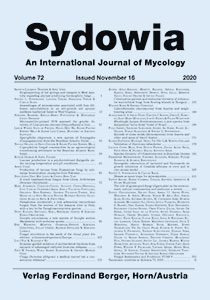
Fungal microbiota in the seeds of the clonal plant Iris sibirica – a threatened species in Europe Ewa Wegrzyn, Martyna Dominiak-Swigon, Karolina Górzynska, Julian Chmiel, Konrad Switalski & Marlena Lembicz Sydowia 72: 107-114 Published online on May 26th, 2020 Endophytes, including fungal endophytes, are the first organisms that colonize young plants and are subsequently transmitted to mature plants and their seeds. In a clonal plant with several reproductive episodes, fungal endophytes are transmitted to offspring many times and accumulate in a plant body and population. In our study, we examined the presence of fungal endophytes and their taxonomic diversity in the seeds of the clonal plant Iris sibirica. In six studied localities of I. sibirica in Poland, which represented three habitat types, 12 taxa of fungal endophytes from Ascomycota were recorded. Two taxa were most abundantly represented: Alternaria alternata and Botrytis cinerea. The greatest taxonomical differentiation of endophytes was found in the seeds from anthropogenic habitats. The largest number of seeds with endophytes was noted in oak forest habitats (88.33 %), while the smallest number was noted in grassland habitats (55 %). This is the first report on the occurrence of endophytic fungi in seeds of a critically endangered species in Europe. Key words: fungal endophytes, meta-holobiont, ramets, perennial plant. |
 |